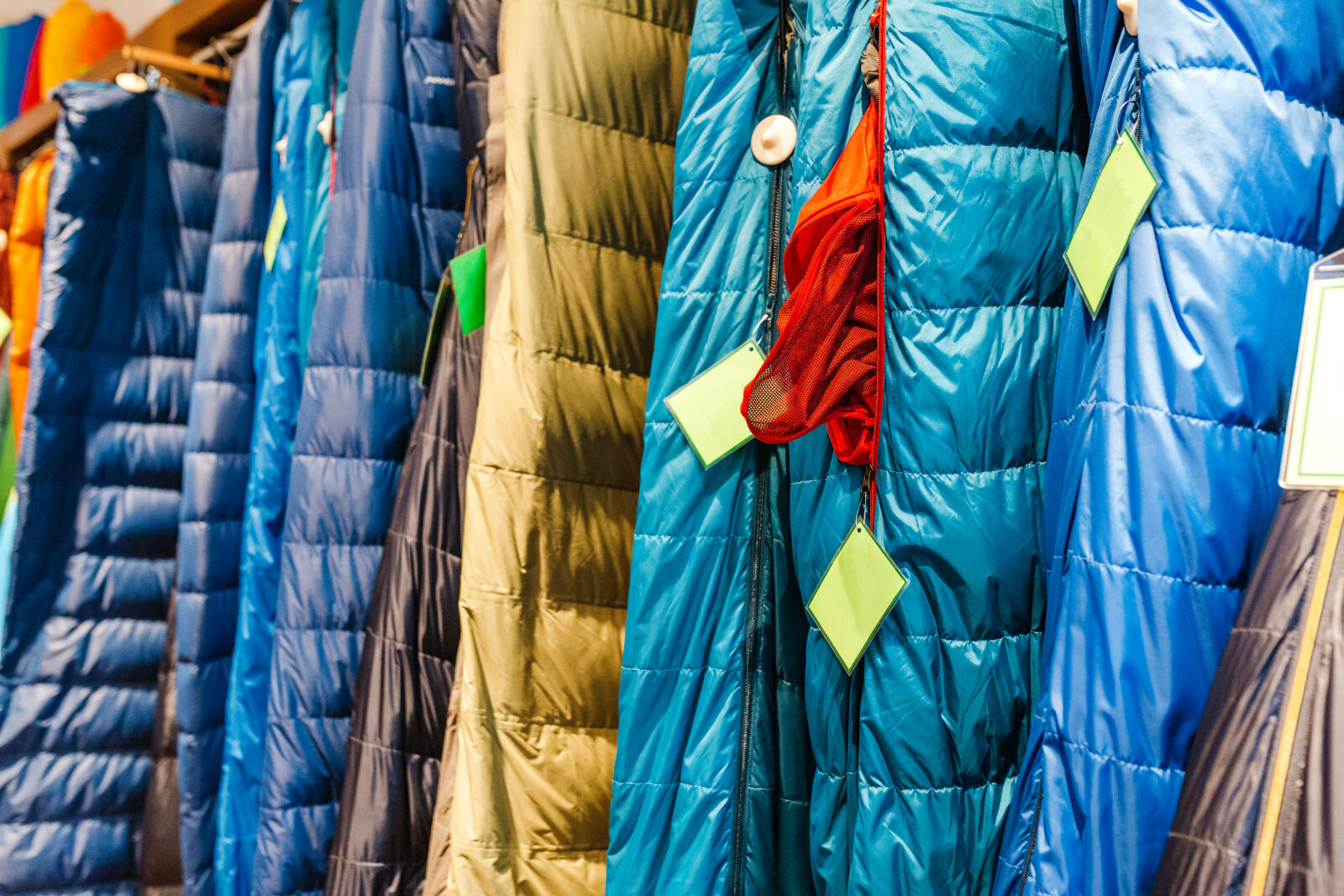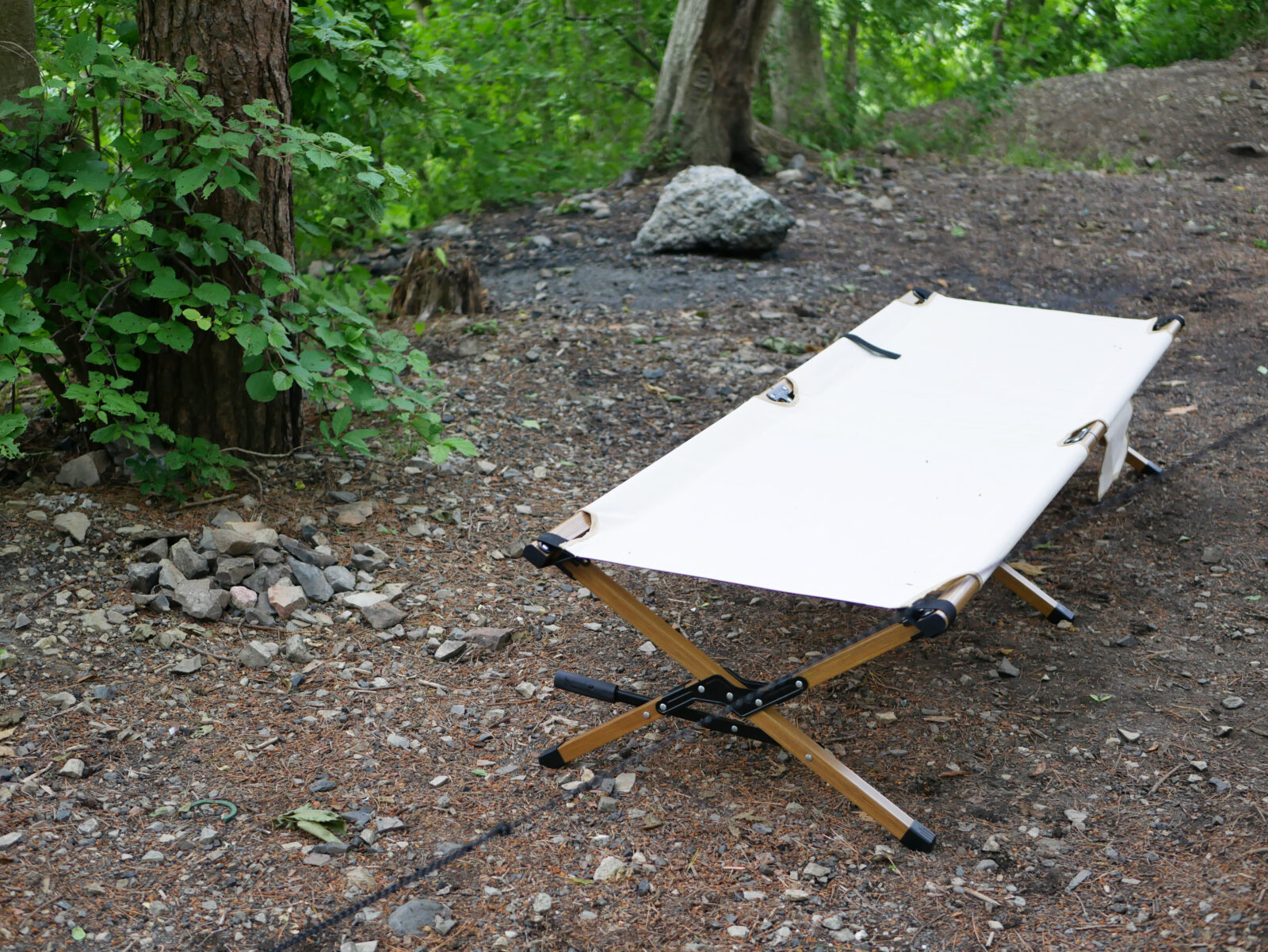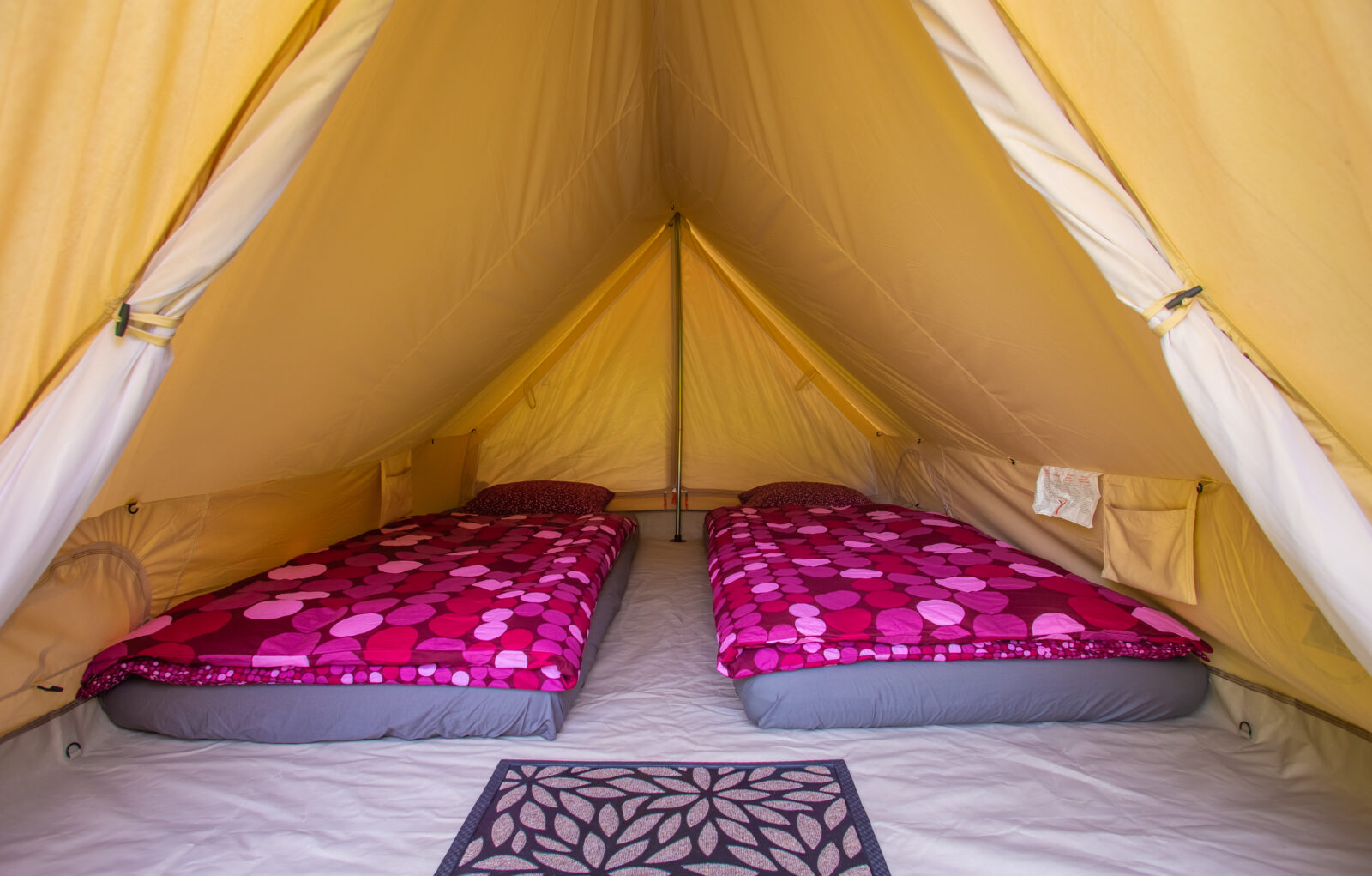Camping cots and air mattresses are 2 great options for anyone looking to get a good night’s sleep on a camping trip.
But, which one is right for your needs?
We know how important it is to pack the perfect camping gear for any outdoor adventure, so we’ve set camping cots and air mattresses up on a head-to-head match-up to help you decide which option is most appropriate for you.
Let’s get started.
TL:DR
Camping cots and air mattresses are both excellent pieces of gear. If comfort and insulation are your top priority, a cozy and packable air mattress is likely your best choice.Otherwise, camping cots are perfect for folks who want a simple, reliable, durable, and elevated sleeping surface for the night.
Page Contents
What's a camping cot?
Camping cots have been around for centuries, as they were used as sleeping areas for soldiers at war long before anyone ever thought to take them into the mountains.
These days, camp cots are a popular choice for campers and backpackers who want to sleep on an elevated platform off the ground. They generally have a steel or aluminum frame and a thick piece of ripstop polyester or canvas stretched over the top that serves as your sleeping area.
Most cots are designed for solo campers and they’re slightly smaller than your standard twin-sized bed. However, it is possible to find double cots that are made for two people if you like to camp with a partner.
For the most part, cots are fairly heavy, so they’re usually designed for car camping use at popular campgrounds, such as those in Yosemite National Park. But, some cots are small enough and light enough to pack on more remote adventures.
The popular brands among campers are Coleman, King Camp, Tough Outdoors, and Nature Hike.
What's an air mattress?
Air mattresses are a type of large, inflatable mattress designed to simulate the size and comfort of a bed at home. Although we often think of them as quite a modern invention, they have existed since at least the 19th century.
However, it’s important to note that when we talk about air mattresses, we’re talking about larger air beds, which often require a pump to inflate. This makes them different from inflatable sleeping pads, which are generally smaller, lighter, and designed more for packing in a hiking backpack than car camping.
Modern air mattresses for camping come in a wide range of sizes, including everything from a king to a standard twin. Since they’re usually heavier than inflatable sleeping pads, air mattresses are best used for car camping applications where comfort is key.
The popular brands among campers are Nature Hike, Intex, and Olar Hike.
Price comparison
Both camping cots and air mattresses come in a wide range of different price points, from budget-friendly models around $50 all the way up to premium models that cost $300 or more.
As a result, it’s difficult to say that either camp cots or air mattresses are always more affordable than the other.
Winner : It’s a tie because both air mattresses and camping cots run the gamut in terms of price points. You can get affordable and premium models of each, so it’s possible to find gear to suit any budget.
Ease of set up
Air mattresses and camping cots are both designed to be relatively simple to set up, though there are a few peculiar things to note about the pitching process for each piece of furniture.
For air mattresses, the set-up process is usually quite straightforward. You simply remove the mattress from its stuff sack, roll it out, attach the pump, and wait for the mattress to inflate. But, you often need electricity for the pump, which can be problematic at some campgrounds.
Meanwhile, camping cots usually have fairly simple fold-open designs. If you opt for a lightweight backpacking camping cot for your Appalachian Trail thru-hike, you may have to do a small amount of assembly, but this process usually doesn’t take more than a few minutes. After a bit of practice, most people find they can pitch a camp cot very quickly.
Winner : Camping cots because they have simple, fold-open designs that allow for speedy set-up. Air mattresses are also generally quite easy to pitch, but you sometimes need electricity to operate the inflation pump.
Comfort levels
Comfort is a very subjective measurement, so it’s impossible to say that every single person will agree with us on this point.
However, most campers – including back sleepers, side sleepers, and stomach sleepers – find that air mattresses are more comfortable. That’s because you can generally adjust the firmness of an air mattress so that it’s most comfortable for your specific needs. Many air mattresses are also large enough for two campers, which is ideal if you’re camping with a partner.
Of course, camping cots can be quite comfortable, especially if you manage to find one that’s perfectly tensioned and doesn’t sag. But, many campers find that they need to layer a lightweight sleeping pad on top of the camping cot for maximum comfort.
Additionally, most cots are designed for just one person, though two person models are available. In general, two person air mattresses are more comfortable than double cots, though, because many double cots have a metal bar running down the center for structural support.
Winner : Air mattress because they provide a thick, well-padded, and adjustable firmness sleeping surface so everyone can get the best possible night’s sleep.
Insulation and warmth
One of the most overlooked yet essential characteristics of camping cots and air mattresses is their ability to insulate you from the ground.
Although we often worry about bundling up in our heated jackets and winter sleeping bags on cold evenings in the mountains, sleeping directly on the cold ground is a sure-fire way to increase your risk of developing hypothermia.
Therefore, finding a sleep system that can keep you warm and comfortable at night is essential, especially if you’re winter camping in a place like Rocky Mountain National Park.
As far as insulation goes, air mattresses actually do quite a good job at shielding you from the cold ground. While only a few models list their R-value (a measure of the insulating qualities of a sleeping pad or mattress), most air mattresses offer a decent amount of insulation at night.
On the other hand, camping cots generally don’t offer too much by the way of insulation. That’s because the sleeping area of a cot is made from a sturdy piece of canvas or ripstop fabric that’s meant to support your body weight rather than keep you warm. Plus, the cold air circulating under your cot causes heat loss through a process called convection, which can make you very cold, very quickly.
Even though you can certainly purchase a cot with a built-in insulation pad, this isn’t a standard feature. Indeed, many campers find that they need to couple a cot with a sleeping pad for warmth in the winter months.
Winner : Air mattress because it offers substantially more insulation from the cold ground than a camping cot.
Packability and portability
Although there’s quite a lot of variation here from one model to the next, in general, air mattresses tend to be more packable than camping cots. That’s because air mattresses can be deflated and rolled up to a relatively small size.
Meanwhile, most camping cots are too rigid and bulky to pack down to a reasonably compact shape.
With that in mind, you’ll often find that camping cots are lighter than their fellow air mattresses. This, of course, does vary from model to model, but you’ll often find that air mattresses, while compact, tend to be quite heavy.
While you can certainly find lightweight and highly portable air mattresses, generally speaking, air mattresses are best when space is a bigger concern than weight savings. Alternatively, cots are usually great for times when you can handle a bit of bulk, but you’d like to keep weight at a minimum.
Winner : Air mattresses because they tend to be much more compact than cots, even if they’re often a bit heavier. Although there are some ultralight backpacking cots out there, these are the exception rather than the rule.
Durability
Most modern camping cots and air mattresses are designed to be quite durable, but there are some differences in the overall construction of both types of gear.
These days, air mattresses are generally made from rugged, siliconized fabrics for added durability, but there’s always the risk of leaks and punctures when you’re using an inflatable mattress.
Alternatively, camping cots are made with solid steel or aluminum frames for maximum durability. In fact, cots can have maximum weight capacities of upwards of 500lbs (227kg), which just goes to show how durable cots actually are.
Winner : Camping cots because they’re made with extra-tough steel or aluminum frames that boast exceptional weight capacities. Although most air mattresses are also quite durable, there’s always a risk of a puncture or leak.
Convenience
Our final category of convenience might seem a bit odd, but it refers to two primary areas of concern for most campers: gear storage opportunities and how easy it is to get in and out of your sleeping area at night.
As far as gear storage goes, camping cots usually provide quite a bit of gear storage in your tent. They accomplish this either through built-in gear pockets or simply because they are raised up off the ground, which provides you with under-cot storage in your tent.
On the other hand, most air mattresses don’t offer gear storage pockets nor under-mattress storage because they sit directly on the floor of your tent.
When it comes to how easy it is to get in and out of your sleeping area at night, camping cots are the winner. While there are some very thick air mattresses out there, they can’t quite compete with the height of a camping cot, which can be up to 2’ (61cm) off the ground.
Winner : Camping cots because they offer gear storage pockets, under-cot gear storage, and an elevated sleeping platform that’s easy to get in and out of at night.
Gaby Pilson
Gaby is a professional mountain guide with a master’s degree in outdoor education. She works primarily in the polar regions as an expedition guide, though she can be found hiking, climbing, skiing, sailing, or paddling in some of the world’s most amazing places when not at work.


